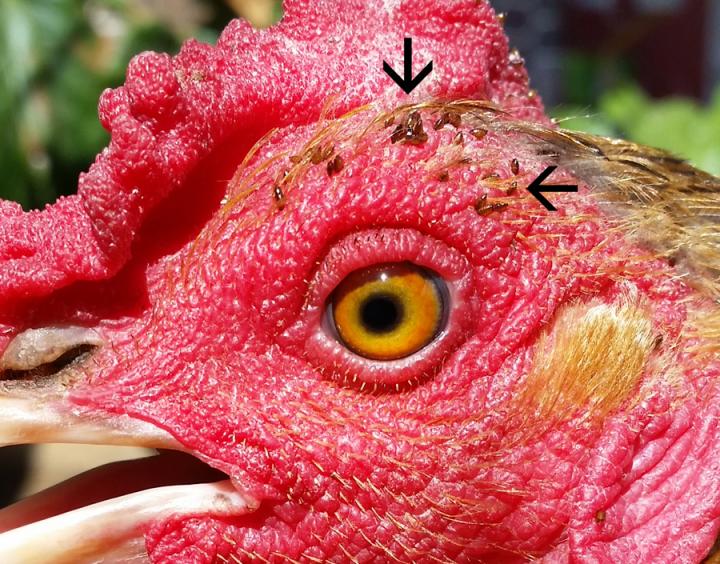



Backyard Chickens Infested with More Diverse Bugs Than Farmed Birds
US - Backyard chickens may live a sweeter life than chickens on commercial poultry farms, but roaming green grass and scratching real dirt exposes these birds to a different suite of parasites than those found in most commercial facilities.A paper in the latest issue of the Journal of Medical Entomology by University of California, Riverside scientists Amy C. Murillo and Bradley A. Mullens reveals what’s crawling on backyard birds, and the answer will likely make chicken fanciers itch.
The researchers surveyed 100 adult hens in 20 different backyards in southern California and searched the birds and their coops for ectoparasites.
They found a much greater diversity of ectoparasites on the backyard chickens than has been reported in commercial flocks.
Ectoparasites were found on most of the flocks surveyed (80 per cent),and lice were the most common and abundant. Six different species of louse were found on the chickens, and some individual chickens had hundreds of lice.
Sticktight fleas were found in only 20 per cent of flocks, but infestations could be quite severe. The northern fowl mite (Ornithonyssus sylviarum) was the most common mite, but the scaly leg mite (Knemidocoptes mutans) and the chicken red mite (Dermanyssus gallinae) were also found.

Commercial poultry flocks are known to suffer from several of the same ectoparasites, but these birds are generally housed in “battery cages” that give them little contact with the ground or substrate that immature stages of parasites like fleas and some mites need to develop.
In addition, these cages provide fewer crevices that might harbour ticks or bed bugs when they aren’t feeding on birds. Finally, birds in commercial flocks are generally all the same age and breed which may affect the suite of parasites that they host.
The results of this study suggest that some of the perks of being a backyard chicken, such as comfortable coops and access to the outdoors, might also increase the birds’ availability to ectoparasites.
According to Ms Murillo, many of the chicken owners that participated in this study were surprised to learn that their chickens had ectoparasites, and almost none of the owners were practicing parasite prevention.
Further study of the ectoparasite community on backyard chickens in the US will be necessary to develop effective prevention and treatment techniques. These birds may be enjoying the good life, but it turns out to be fairly itchy.
The full article, “Diversity and Prevalence of Ectoparasites on Backyard Chicken Flocks in California,” is available at http://jme.oxfordjournals.org/lookup/doi/10.1093/jme/tjv243.








